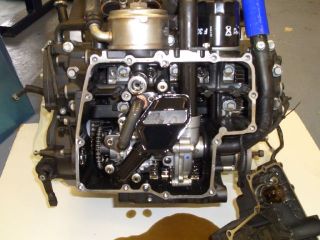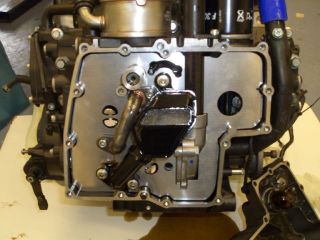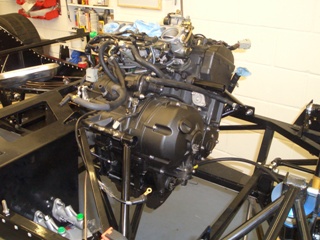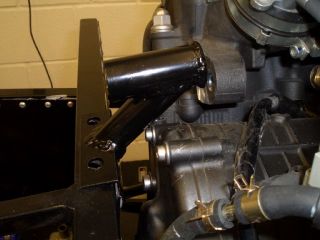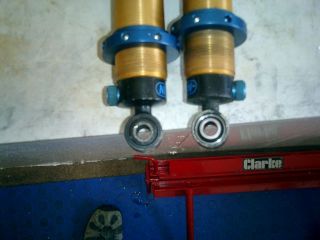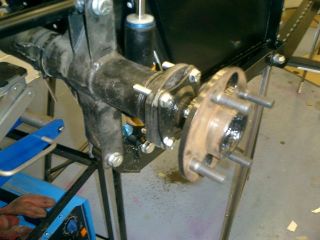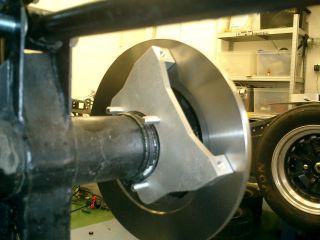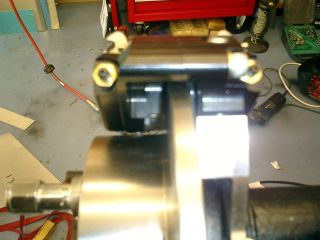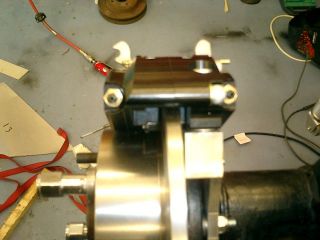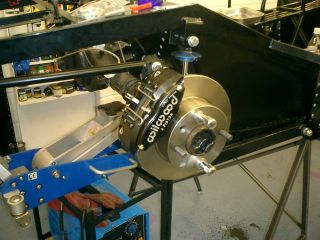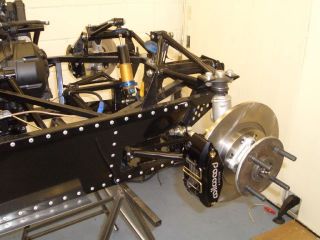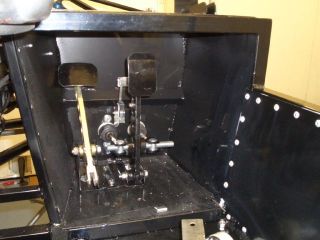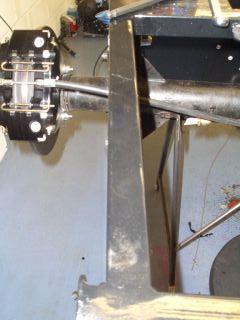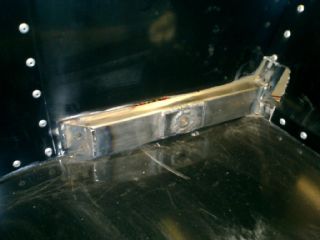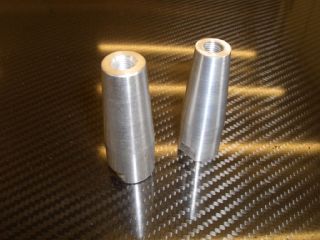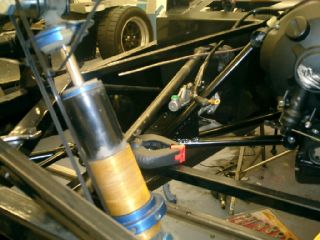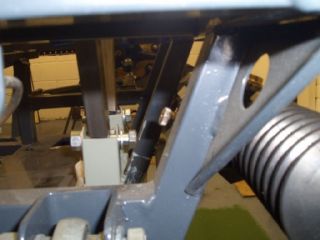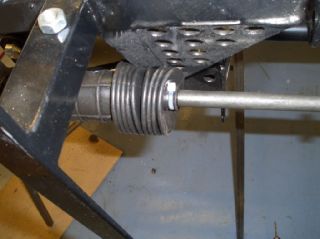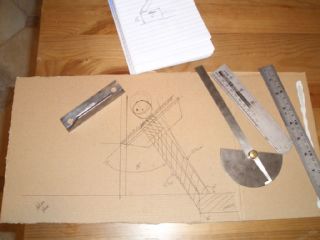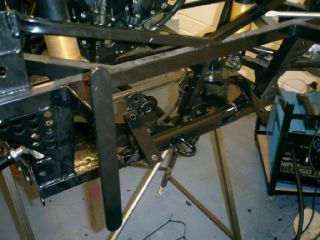At first I assumed it was my modified trailing arms that were the problem.
But they weren't - they were well within the tolerances that the rest of the chassis appears to have been built
to (i.e. +/-3mm...). Then I thought the axle might have been bent in the crash. It might have been, but not enough
to explain the offset. Then I wondered if the suspension mounts welded onto the axle might be bent. They were,
but again, not enough to result in the axle being an inch out of line. Eventually, after a lot of measuring and
pondering, the root cause of the problem became pretty clear.
The problem is that the whole of the bottom rear part of the passenger/driver compartment has been welded on at
an angle. Basically, a substantial part of the chassis is wonky. Because this part of the chassis runs very close
to the trailing arms, the angle of this part of the chassis (and the 10mm steel plate sections in particular) define
where the rear axle sits relative to the rest of the car. And because the chassis is wonky, the rear axle isn't
central.
This is, of course, once again A Bad Thing. The rear wheels are supposed to be behind the front wheels, not wandering
off to one side.
I ended up taking quite a few pictures and measurements to satisfy myself that the chassis was indeed lopsided.
Rather than bore everyone with all the minutiae here, true lovers of bent chassis pictures can take a look here.
In order to allow the rear axle to run centrally relative to the chassis, it was inevitable that the 10mm plate
on the driver's side had to go. The trouble is that it's a fairly integral part of the structure, not to mention
that the lap and crotch straps mounts for the driver's safety harness are welded to it. So it had to go, but it
also had to be replaced. |
